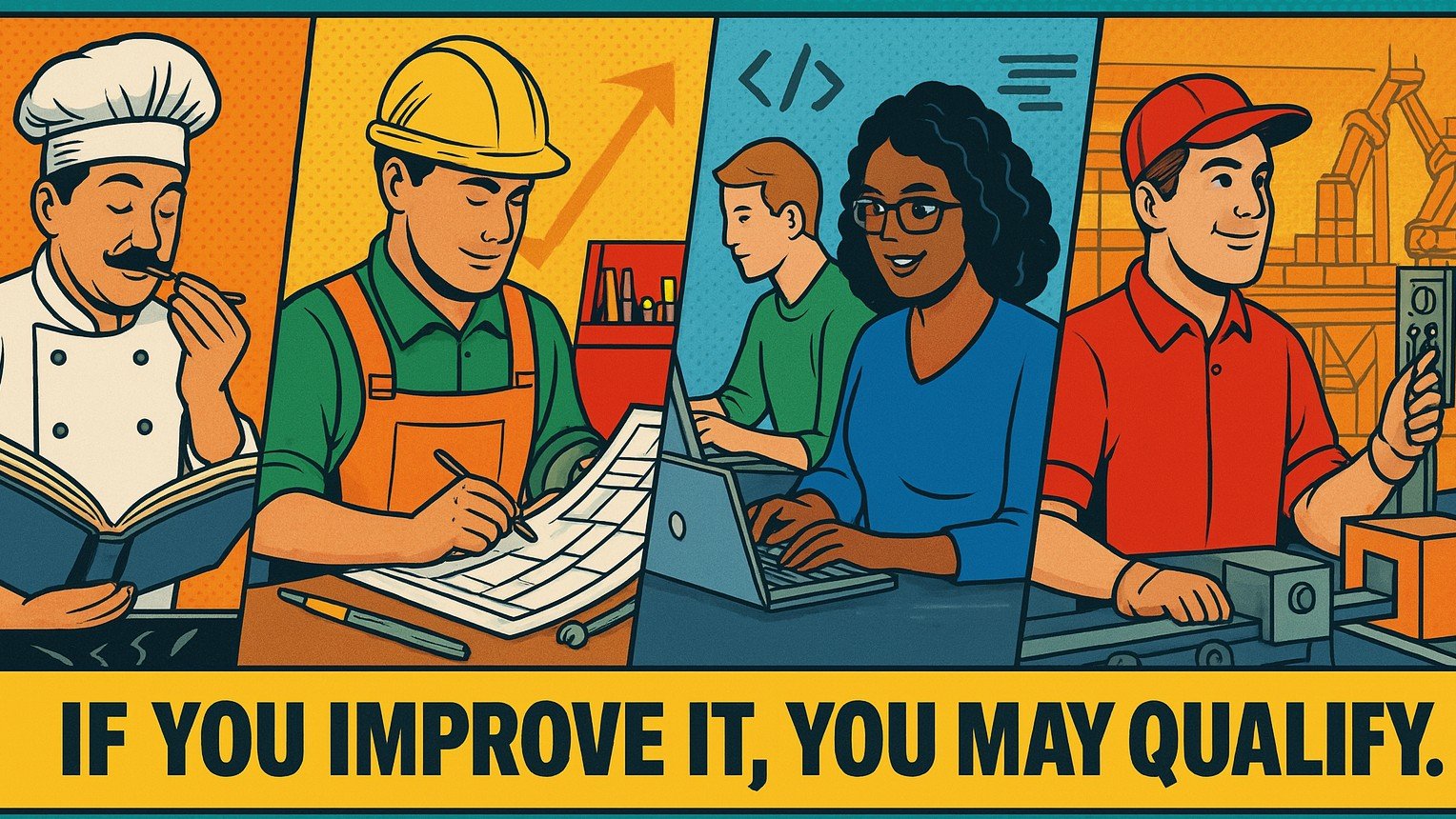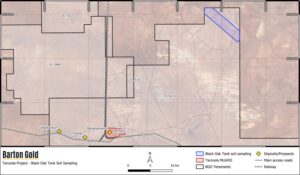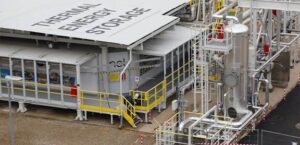La Center, WA / Syndication Cloud / July 11, 2025 / Federal Tax Credits ORG

Key Takeaways:
- The expanded 2025 R&D Tax Credit guidelines now include more businesses across industries beyond traditional tech companies.
- Qualifying businesses can receive 14-20% of their R&D expenses as dollar-for-dollar tax reductions against federal liability.
- You don’t need a formal R&D department to qualify—systematic problem-solving in your existing operations often meets the criteria.
- Small businesses and startups can use R&D credits to offset payroll taxes even if they have limited income tax liability.
2025’s Expanded R&D Tax Credit: What’s Changed and Who Now Qualifies
The 2025 Research and Development Tax Credit has undergone significant expansion, opening doors for businesses that previously didn’t think they qualified. These updated guidelines represent one of the most substantial changes to the R&D credit system in years, broadening the definition of what constitutes qualifying research activities.
The expanded guidelines now recognize a wider range of systematic problem-solving activities across industries beyond traditional technology sectors. What does this mean for your business? If you’re developing new products, improving manufacturing processes, creating custom software solutions, or enhancing business systems, you likely qualify for significant tax savings through the R&D credit program, explains Federal Tax Credits ORG.
Under the expanded guidelines, companies in manufacturing, construction, food and beverage, professional services, and many other sectors can access dollar-for-dollar tax reductions that were previously unavailable to them. These credits provide 14-20% of qualifying R&D expenses directly reduced from your tax liability—not just as deductions, but as actual dollar-for-dollar savings.
The IRS 4-Part Test: Your Qualification Framework
At the heart of qualifying for the R&D Tax Credit is meeting the IRS 4-Part Test—a systematic framework that determines whether your activities qualify for these valuable tax incentives. Understanding each component is essential for identifying qualifying work within your organization.
1. Permitted Purpose Requirement
The first requirement focuses on whether your activities aim to create new or improved functionality, performance, reliability, or quality of a business component. This business component could be a product, process, technique, formula, invention, or software. The key is that your work must go beyond aesthetic changes and focus on functional improvements.
For example, a manufacturing company redesigning its production line to increase efficiency meets this requirement. Similarly, a software company developing new features for its application qualifies, as does a food producer creating a new preservation technique. The expanded 2025 guidelines recognize a broader range of improvement activities than ever before.
2. Technological in Nature Requirement
For activities to qualify, they must rely on principles of physical science, biological science, engineering, or computer science. This doesn’t mean you need PhDs on staff—it simply requires that your problem-solving approach is grounded in scientific or technical principles rather than art or humanities.
Under the expanded guidelines, more applications of these principles now qualify. For instance, a construction firm using engineering principles to develop more earthquake-resistant building techniques meets this requirement. Similarly, a restaurant implementing sophisticated inventory management software based on data analytics would qualify under the technological requirement.
3. Process of Experimentation Requirement
This requirement centers on how you approach problem-solving. Qualifying activities must involve a systematic process of evaluating alternatives through trial and error, testing, and analysis. It’s not enough to simply implement known solutions—your team must engage in experimental approaches to overcome technical challenges.
The expanded guidelines now recognize more diverse experimentation methods. For example, a food company testing different ingredient combinations to extend shelf life without preservatives would qualify. A service business developing custom algorithms to optimize scheduling would also meet this requirement, as would a construction company testing various material combinations for improved insulation properties.
4. Technological Uncertainty Requirement
For work to qualify, there must be uncertainty regarding whether you can achieve the desired result or the appropriate design path to reach it. This uncertainty exists when information available at the project’s start doesn’t establish the capability or method for developing or improving the business component.
The 2025 expanded guidelines acknowledge a wider range of uncertainties across different industries. A manufacturing company uncertain about how to automate a specific production process meets this requirement. Similarly, a retail business unsure how to integrate multiple data systems to create a unified customer experience would qualify under this criterion.
Industries Newly Eligible Under Expanded Guidelines
The 2025 R&D Tax Credit expansion has opened doors for numerous industries that previously might not have considered themselves eligible. Let’s examine which sectors can now benefit from these valuable tax incentives.
1. Traditional Manufacturing
Manufacturing companies are prime candidates for R&D credits under the expanded guidelines. Activities like developing new production methods, improving existing processes for efficiency or quality, creating custom tools or fixtures, and implementing automation systems all potentially qualify.
A metal fabrication company that redesigns its assembly process to reduce waste by 15% would likely qualify. Similarly, a textile manufacturer developing new techniques to incorporate sustainable materials would meet the criteria for R&D credits.
2. Food and Beverage Companies
The expanded guidelines now clearly recognize food science as qualifying R&D activity. Companies developing new recipes, improving preservation techniques, enhancing production methods, or creating specialized equipment for food processing can claim substantial credits.
For example, a brewery experimenting with fermentation processes to create low-alcohol beverages while maintaining flavor profiles would qualify. A commercial bakery developing gluten-free alternatives with improved texture and shelf stability would also meet the requirements.
3. Construction and Architecture Firms
The construction industry benefits significantly from the expanded guidelines. Activities such as developing innovative building techniques, testing new materials for specific applications, creating energy-efficient designs, and implementing BIM (Building Information Modeling) systems can all qualify.
A construction company developing a method to reduce concrete curing time while maintaining structural integrity would meet the R&D criteria. Similarly, an architecture firm designing specialized ventilation systems for improved air quality would qualify for these tax credits.
4. Service-Based Businesses
Service industries now have clearer pathways to R&D qualification. Activities like developing proprietary methodologies, creating custom software solutions for service delivery, implementing data analytics systems, and designing automated customer service platforms can qualify.
For instance, a logistics company developing an algorithm to optimize delivery routes would likely qualify. A healthcare provider creating a custom patient management system would also meet the requirements for R&D credits under the expanded guidelines.
5. Software Development Companies
While software companies have traditionally been eligible for R&D credits, the expanded guidelines further clarify qualifying activities. Development of new applications, significant improvements to existing software, creation of APIs and integration tools, and development of specialized algorithms all qualify.
A software company developing machine learning models to predict customer behavior would clearly qualify. Similarly, a firm creating new cybersecurity protocols to protect sensitive data would meet the requirements under the expanded guidelines.
Maximum Benefit Strategies for 2025
To maximize your R&D Tax Credit benefits under the expanded guidelines, consider implementing these strategic approaches that align with the 2025 requirements.
1. Documentation Best Practices
Proper documentation is crucial for supporting your R&D claim and maximizing your benefit. The expanded guidelines emphasize the importance of contemporaneous documentation that clearly demonstrates how your activities meet the 4-part test.
Implement systems to track time spent on qualifying projects, maintain detailed project plans and technical documentation, preserve testing results and prototype iterations, and document the evolution of your problem-solving process. Consider implementing specialized R&D tracking software or adapting your existing project management tools to capture relevant information.
2. Lookback Period Opportunities
One of the most valuable aspects of the R&D Tax Credit is the ability to claim credits for prior years. You can file amended returns for up to three open tax years, potentially resulting in substantial refunds for qualifying activities you conducted but didn’t claim.
For businesses that haven’t previously claimed R&D credits, this represents an immediate opportunity to recover tax dollars from 2022, 2023, and 2024 activities. The expanded guidelines may qualify activities you previously thought ineligible, making a comprehensive review of past projects highly valuable.
3. Payroll Tax Election for Startups
Qualified small businesses can elect to apply up to $500,000 of their R&D Tax Credits against payroll taxes instead of income taxes. This is particularly valuable for startups and growth-stage companies that may not have significant income tax liability but still have substantial payroll obligations.
To qualify for this election, your company must have less than $5 million in gross receipts for the credit year and no gross receipts for any tax year before the 5-tax-year period ending with the credit year. The expanded guidelines have made this election more accessible and clearer to implement.
Take Action Now: Next Steps for Claiming Your Credit
The expanded 2025 R&D Tax Credit guidelines present an unprecedented opportunity for businesses across industries to claim valuable tax incentives for their innovation activities. To maximize your benefits, consider these actionable steps:
- Conduct a preliminary assessment of your potential qualifying activities, focusing on projects that involved technological problem-solving and experimentation.
- Gather existing documentation related to R&D projects, including project plans, testing results, and payroll records for involved employees.
- Consider whether previously unclaimed years could provide additional benefits through amended returns.
- Consult with R&D Tax Credit specialists who understand the expanded guidelines and can help maximize your benefit.
Federal Tax Credits ORG offers expert guidance to help businesses navigate the complexities of R&D Tax Credits and maximize their returns under the newly expanded 2025 guidelines.
Federal Tax Credits ORG
1315 W E Pl.
La Center
WA
98629
United States




















